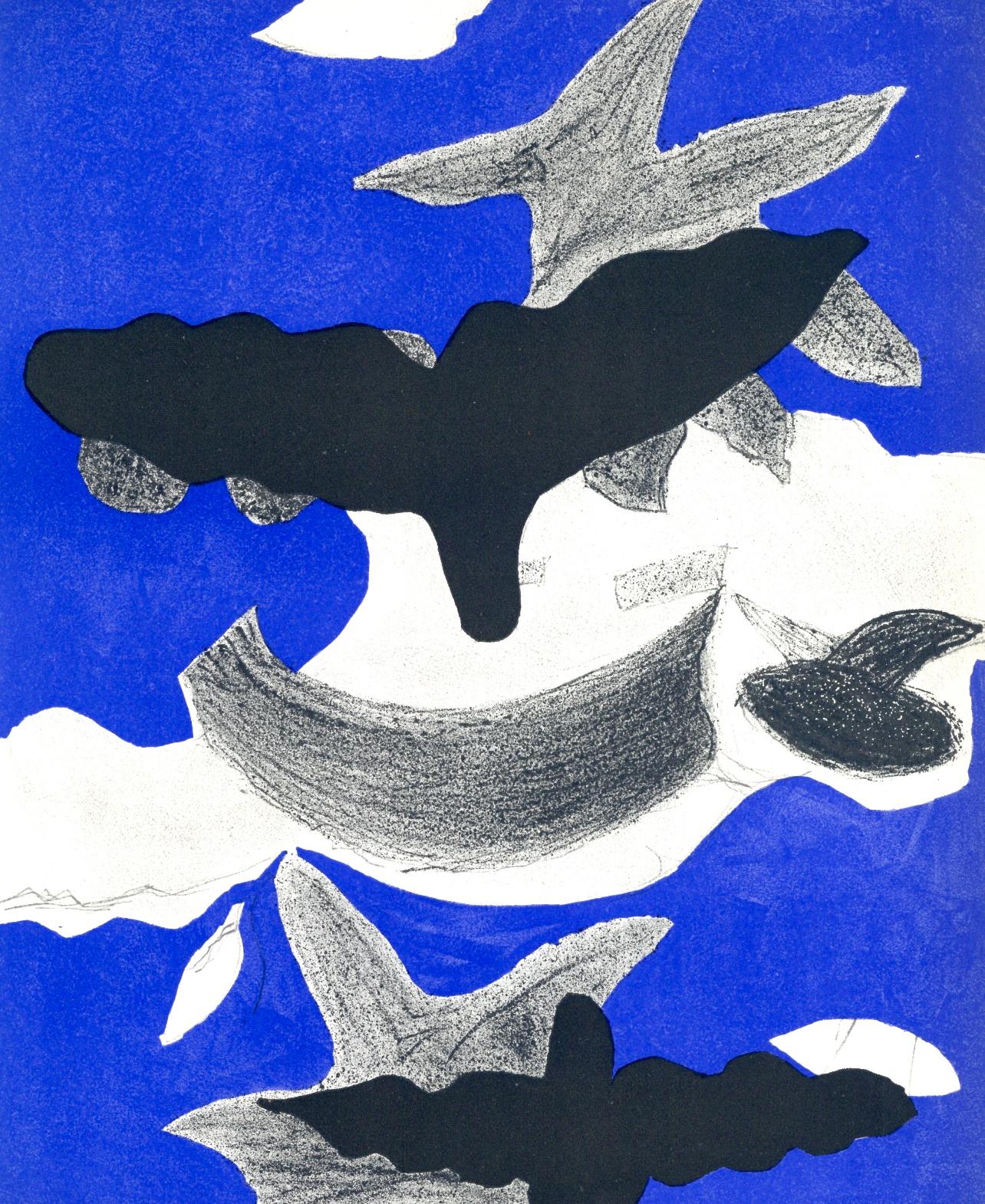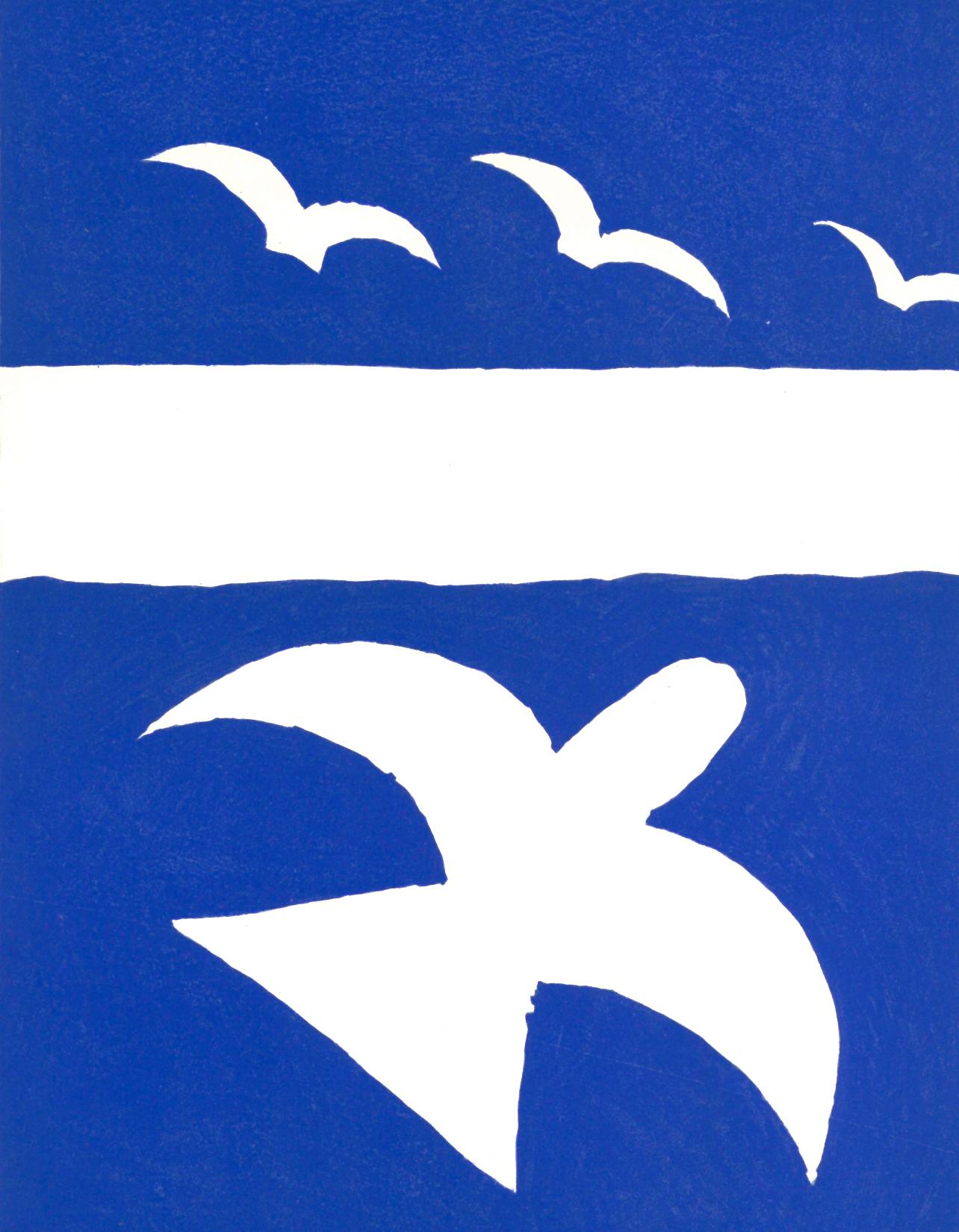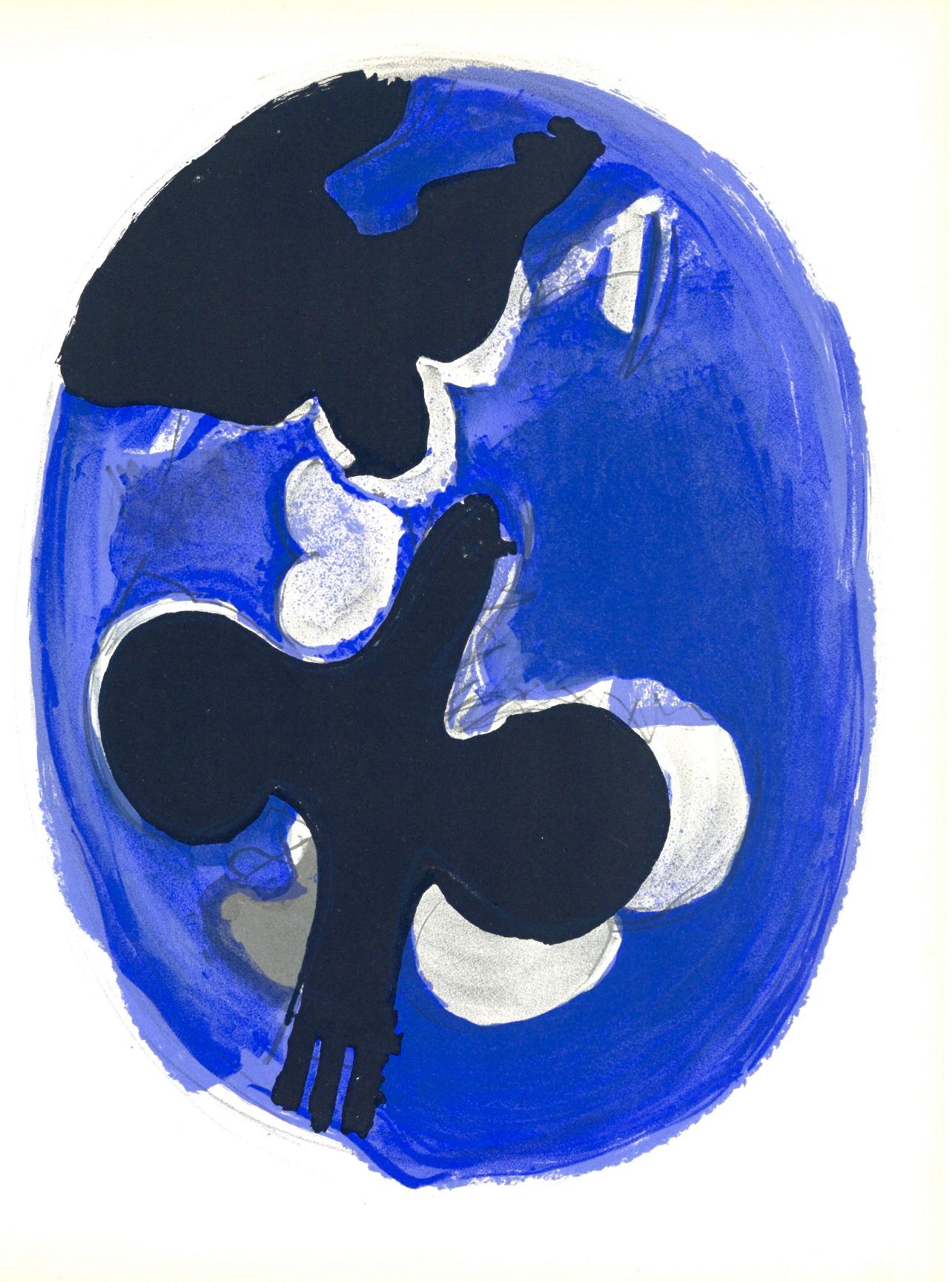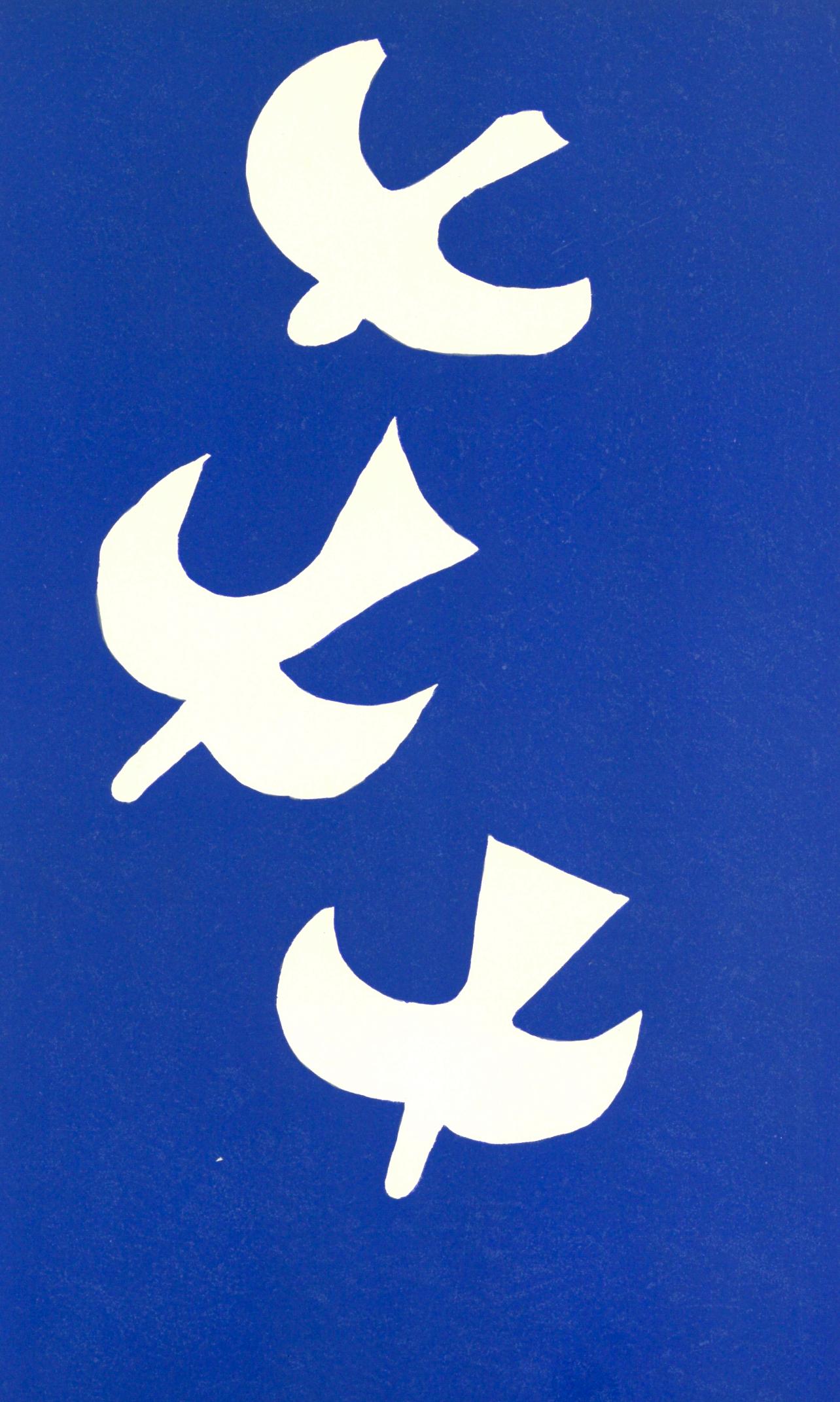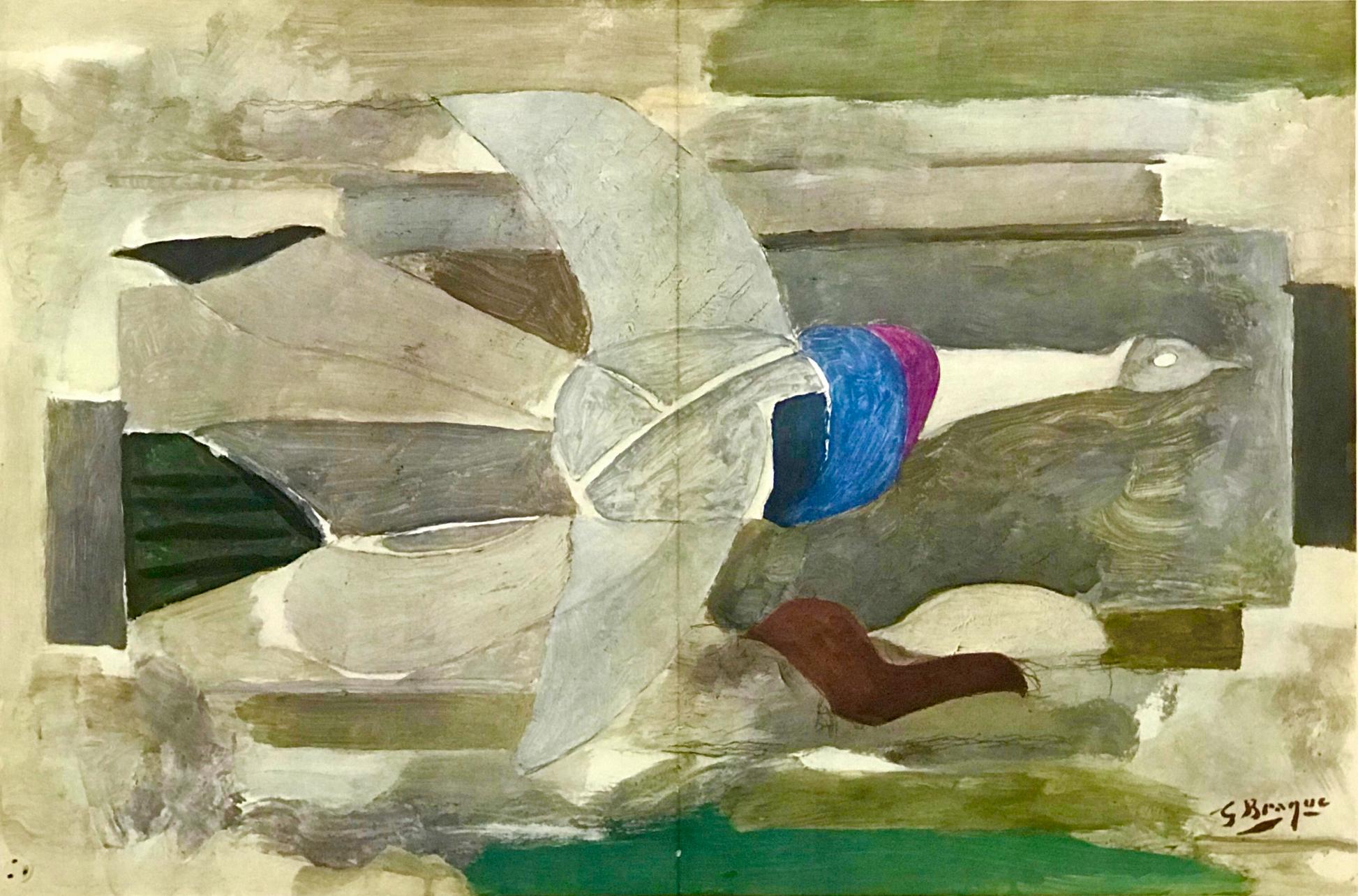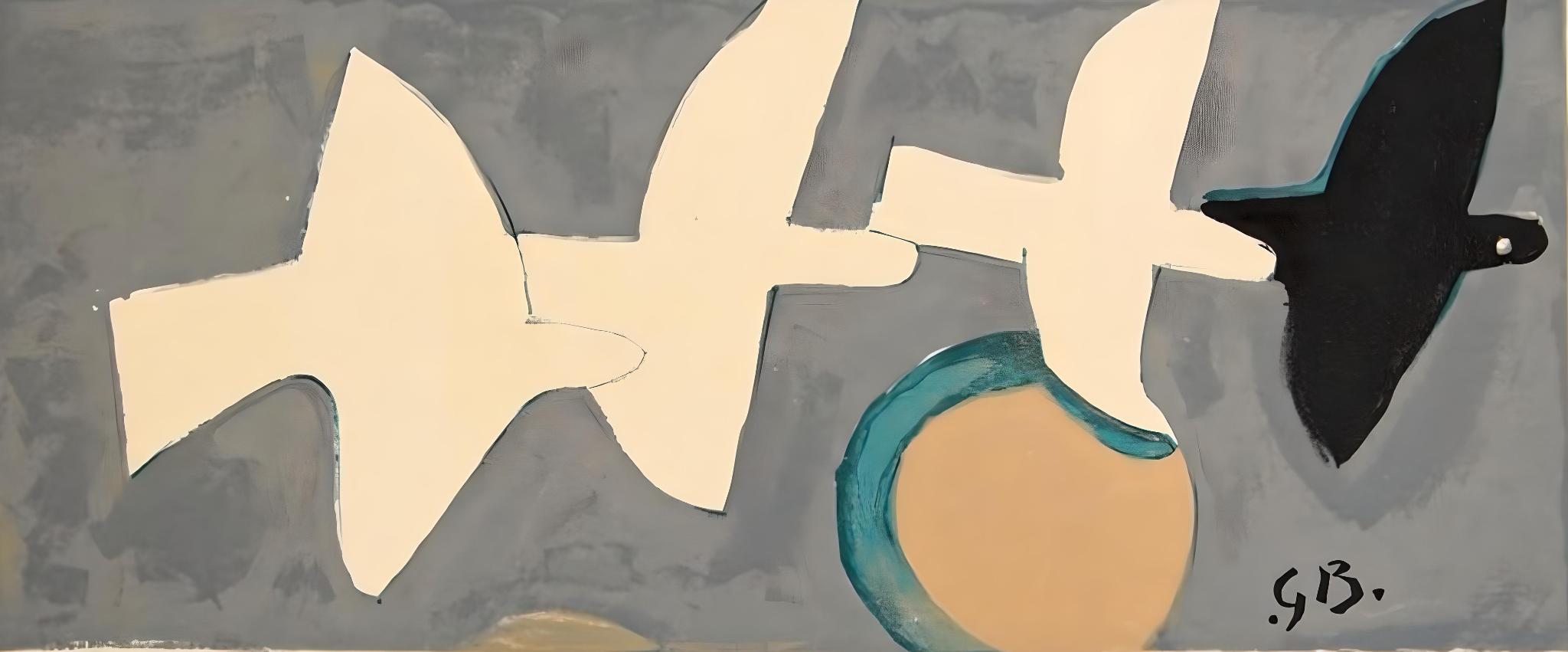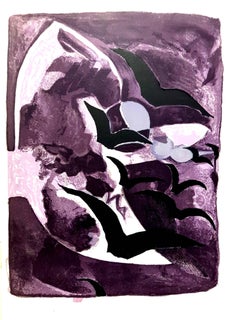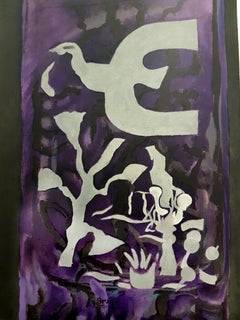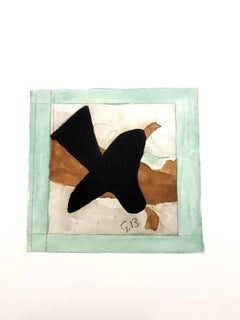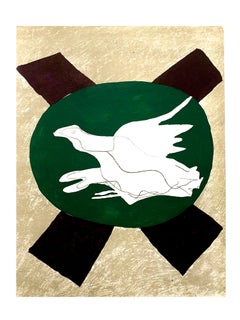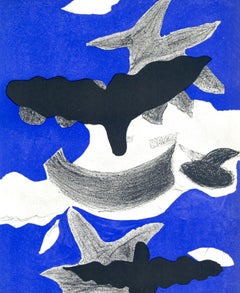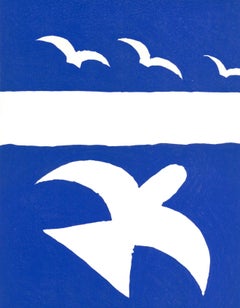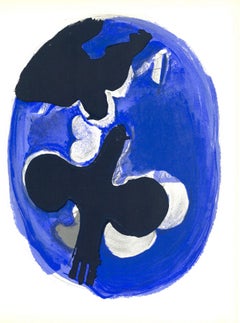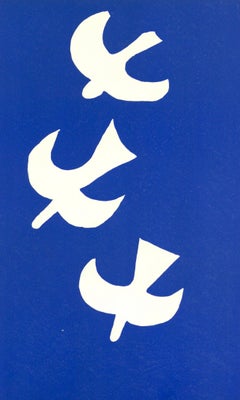Items Similar to After Georges Braque - Oiseaux - Pochoir
Want more images or videos?
Request additional images or videos from the seller
1 of 7
After Georges Braque - Oiseaux - Pochoir1958
1958
$1,425.33
£1,062.49
€1,200
CA$1,986.71
A$2,159.22
CHF 1,141.06
MX$26,121.86
NOK 14,211.11
SEK 13,423.27
DKK 9,138.54
About the Item
after Georges Braque
Oiseaux
Color Pochoir on Paper
Published in the deluxe art review, XXe Siecle (issue number 11 "Les nouveaux rapports de l'art et de la nature")
1958
Dimensions: 32 x 24 cm
Publisher: G. di San Lazzaro.
Signed in the plate, not by hand
Unnumbered as issued
About the Seller
4.9
Gold Seller
Premium sellers maintaining a 4.3+ rating and 24-hour response times
Established in 2015
1stDibs seller since 2015
967 sales on 1stDibs
Typical response time: 1 hour
- ShippingRetrieving quote...Shipping from: Collonge Bellerive, Geneve, Switzerland
- Return Policy
Authenticity Guarantee
In the unlikely event there’s an issue with an item’s authenticity, contact us within 1 year for a full refund. DetailsMoney-Back Guarantee
If your item is not as described, is damaged in transit, or does not arrive, contact us within 7 days for a full refund. Details24-Hour Cancellation
You have a 24-hour grace period in which to reconsider your purchase, with no questions asked.Vetted Professional Sellers
Our world-class sellers must adhere to strict standards for service and quality, maintaining the integrity of our listings.Price-Match Guarantee
If you find that a seller listed the same item for a lower price elsewhere, we’ll match it.Trusted Global Delivery
Our best-in-class carrier network provides specialized shipping options worldwide, including custom delivery.More From This Seller
View AllAfter Georges Braque - Les oiseaux de nuit - Lithograph
By Georges Braque
Located in Collonge Bellerive, Geneve, CH
Georges Braque - Les oiseaux de nuit
Lithograph after the gouache
1964
Dimensions: 30 x 20 cm
Edition of 200 (one of the 200 on Vélin de Rives)
Mourlot Pre...
Category
1960s Modern Abstract Prints
Materials
Lithograph
Lithograph after Georges Braque
Located in Collonge Bellerive, Geneve, CH
Lithograph after Georges Braque
From the deluxe art review, Derrière le Mirroir
1964
Printed signature
Dimensions: 38 x 28 cm
DLM No. 148, 1964
Edition: Foundation Maeght at Saint P...
Category
1960s Modern Figurative Prints
Materials
Lithograph
The Bird - Lithograph
By (after) Georges Braque
Located in Collonge Bellerive, Geneve, CH
Title: The Bird
Printed signature
Dimensions: 38 x 28 cm
from the edition of 250 as issued in Warnod, Andre, "Les Peintres mes amis" (Paris: Les Heures Claires, 1965)
The father of ...
Category
1960s Modern Portrait Prints
Materials
Lithograph
Georges Braque - Birds - Original Lithograph
By Georges Braque
Located in Collonge Bellerive, Geneve, CH
Georges Braque - Birds - Original Lithograph
Published in the deluxe art review, XXe Siecle
1958
Dimensions: 32 x 24 cm
Publisher: G. di San Lazzaro.
Unsigned and unumbered as issued
Category
1950s Modern Figurative Prints
Materials
Lithograph
Zoran Music (after) - Composition - Pochoir
Located in Collonge Bellerive, Geneve, CH
Zoran Music (after)- Composition - Pochoir
1959
Dimensions: 32 x 24 cm
From the art review XXe siècle
Unsigned and unumbered as issued
Category
1950s Surrealist Abstract Prints
Materials
Etching
(after) Roger Bissiere - Landscape - Lithograph
By Roger Bissière
Located in Collonge Bellerive, Geneve, CH
(after) Roger Bissiere - Landscape - Lithograph
1964
Dimensions: 32 x 25 cm
Edition: G. di San Lazzaro.
from XXè siècle
Unsigned and unumbered as issued
Category
1960s Modern Figurative Prints
Materials
Lithograph
You May Also Like
Braque, Oiseaux, Verve: Revue Artistique et Littéraire (after)
By Georges Braque
Located in Southampton, NY
Lithograph on vélin du Marais paper. Inscription: Unsigned and unnumbered, as issued. Good condition. Notes: From the volume, The Intimate Sketchbooks of G. Braque, Verve: Revue Arti...
Category
1950s Modern Landscape Prints
Materials
Lithograph
$716 Sale Price
40% Off
Free Shipping
Braque, Oiseaux, Verve: Revue Artistique et Littéraire (after)
By Georges Braque
Located in Southampton, NY
Lithograph on vélin du Marais paper. Inscription: Unsigned and unnumbered, as issued. Good condition. Notes: From the volume, The Intimate Sketchbooks of G. Braque, Verve: Revue Arti...
Category
1950s Modern Landscape Prints
Materials
Lithograph
$716 Sale Price
40% Off
Free Shipping
Braque, Oiseaux, Verve: Revue Artistique et Littéraire (after)
By Georges Braque
Located in Southampton, NY
Lithograph on vélin du Marais paper. Inscription: Unsigned and unnumbered, as issued. Good condition. Notes: From the volume, The Intimate Sketchbooks of G. Braque, Verve: Revue Arti...
Category
1950s Modern Landscape Prints
Materials
Lithograph
$716 Sale Price
40% Off
Free Shipping
Braque, Oiseaux, Verve: Revue Artistique et Littéraire (after)
By Georges Braque
Located in Southampton, NY
Lithograph on vélin du Marais paper. Inscription: Unsigned and unnumbered, as issued. Good condition. Notes: From the volume, The Intimate Sketchbooks of G. Braque, Verve: Revue Arti...
Category
1950s Modern Landscape Prints
Materials
Lithograph
$716 Sale Price
40% Off
Free Shipping
Braque, Oiseaux, Verve: Revue Artistique et Littéraire (after)
By Georges Braque
Located in Southampton, NY
Lithograph on vélin du Marais paper. Inscription: Unsigned and unnumbered, as issued. Good condition with centerfold, as issued. Notes: From the volume, The Intimate Sketchbooks of G...
Category
1950s Modern Landscape Prints
Materials
Lithograph
$716 Sale Price
44% Off
Free Shipping
Braque, Quatre oiseaux, Derrière le miroir (after)
By Georges Braque
Located in Southampton, NY
Lithograph on vélin paper. Inscription: Unsigned and unnumbered, as issued. Good condition. Notes: From Derrière le miroir, N° 115, 1959. Published by Aimé Maeght, Éditeur, Paris; pr...
Category
1950s Modern Abstract Prints
Materials
Lithograph
More Ways To Browse
David L Abel
David Shrigley Black Cats Everywhere
Degas Ballerina Etchings
Degas Signed Lithograph
Dieu Et Mon Droit
Distorted Face Paintings
Donna Evans
Earl Washington
Eduardo Paolozzi On Sale
Edward Borein Etching
Edward Millman
El Cid
Engravings Shakespeare
Ernie Barnes On Sale
Erte Autumn
Erte Four Seasons
Erte Letter D
Erte Letter L
